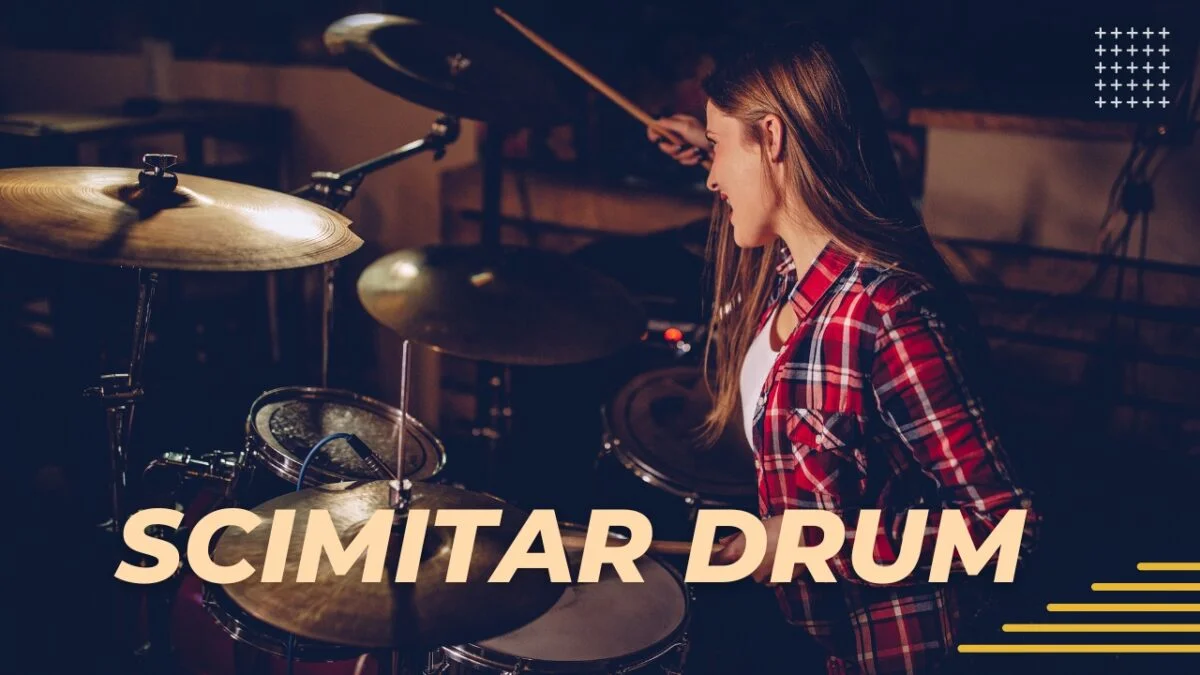The scimitar drum is a fascinating instrument that bridges the ancient and the modern. Its historical roots dig deep into the rich musical traditions of the Middle East, North Africa, and South Asia, where it emerged not only as a musical tool but as a cultural artifact. Today, the scimitar drum captivates audiences and musicians alike, with its unique sound and symbolic shape reminiscent of a scimitar’s blade.
Below, we’ll explore the history, design, and cultural significance of the scimitar drum in a way that brings its story to life.
History
The history of the scimitar drum spans back thousands of years. While its exact origins remain a mystery, the earliest traces of similar instruments can be found in ancient Middle Eastern societies where rhythm was a vital part of ritual, communication, and entertainment. In Egypt, Persia (modern-day Iran), and parts of India, percussive instruments played an essential role in ceremonies and social gatherings.
As the drum moved across cultures and regions, it adopted various names and slight modifications in its shape and sound. However, it consistently retained a curved body that mirrored the iconic scimitar, a blade often linked with the culture and warrior traditions of the same regions. This shape became a defining feature, and the drum eventually garnered its name due to this characteristic.
Construction
The scimitar drum is crafted with precision, blending tradition and craftsmanship. The body is usually made from wood or metal, depending on regional materials and practices. Middle Eastern scimitar drums, for example, are often made of metals such as copper or brass, which provide a resonant, deep sound.
The head of the drum, traditionally made from animal skin, is stretched tightly across the body to produce a crisp, rich tone. Today, modern adaptations may use synthetic materials for durability and tone variation. The skin or membrane is usually tightened with cords or sometimes with metal rings, giving musicians control over the pitch and sound quality. This combination of materials and unique design gives the scimitar drum its distinctive sound, which resonates differently from more commonly known drums.
Design
One of the scimitar drum’s unique aspects is its symbolic shape. The curved body resembles a scimitar sword, making the drum a visual tribute to the cultural aesthetics of ancient warriors. This design doesn’t just serve as decoration—it also influences the way sound reverberates within the drum.
This sword-like curvature creates a resonance chamber that amplifies the drum’s sound. As a result, the scimitar drum produces a rich, almost melodic tone that cuts through the air, making it perfect for both rhythmic and solo performances. This combination of sound and appearance often makes it a focal point in performances and adds a layer of mystique to the musician’s art.
Use
The scimitar drum is not limited to a single style of music; it spans genres and purposes. Traditionally, it was used in religious ceremonies, weddings, and festive gatherings across the Middle East and North Africa. As time went on, its use spread to South Asia, where it became a part of folk music traditions. In some cases, it’s used to accompany dance forms, adding a rhythmic element that accentuates each movement.
Modern musicians, intrigued by its exotic sound and unique shape, have introduced the scimitar drum into genres like jazz fusion, world music, and even experimental compositions. This versatility underscores the drum’s timeless appeal and adaptability.
Rhythm
Rhythm lies at the heart of the scimitar drum’s charm. Skilled drummers produce a wide array of sounds by varying their hand movements and pressure on the drum head. From deep, booming bass tones to light, snappy notes, the range of sounds available creates rich layers of rhythm.
In traditional settings, the scimitar drum’s rhythm often mirrors the tempo and mood of the event. In celebratory occasions, the beat may be fast and exhilarating, while religious or solemn gatherings call for a slower, more meditative rhythm. This ability to adapt to a range of emotions and energies is part of what makes the scimitar drum a beloved instrument across cultures.
Influence
The influence of the scimitar drum can be seen across continents. As traders, explorers, and musicians moved through the Middle East, North Africa, and South Asia, they carried with them instruments that embodied the spirit of their cultures. The scimitar drum, with its curved design and rich sound, stood out and was adopted by different regions.
In modern times, it has found a new home in contemporary music studios and orchestras worldwide. Musicians from various genres and backgrounds appreciate its distinct sound and often incorporate it into their compositions. It is also celebrated in cultural festivals, where it remains a symbol of heritage, history, and artistry.
Craft
The art of crafting a scimitar drum is a skill passed down through generations. Traditional artisans still use methods perfected centuries ago to achieve the specific sound and shape that make the scimitar drum unique. In some Middle Eastern and North African villages, entire families or communities may be dedicated to the craft of drum-making, creating instruments that reflect not only musical talent but cultural pride.
These artisans understand the nuances of the wood, metal, and skin that make up the drum, adjusting each material to create a balanced, high-quality sound. The process is often a painstaking one, involving precise cuts, shaping, and tension adjustments. Once completed, each drum becomes a work of art, ready to tell its own story through music.
Tradition
The scimitar drum has survived through centuries because it carries more than just sound; it carries tradition. In many parts of the Middle East and South Asia, it plays a role in rituals, festivals, and family events, passing down cultural stories and histories to new generations. For many, the scimitar drum is a symbol of resilience and continuity—a reminder of the cultures that shaped its sound and shape.
When played, the scimitar drum connects the listener to a deeper cultural rhythm, as each beat echoes back to those who once used it to express joy, sorrow, unity, and spirit.
Sound
The sound of the scimitar drum is unlike any other percussion instrument. Its ability to produce deep, resonant bass notes alongside sharp, lively tones gives it an expressive range that can mimic both power and subtlety. This unique tonal versatility allows it to complement other instruments or take the lead in a performance.
For drummers and musicians, the scimitar drum presents a rare opportunity to play an instrument that doesn’t just add rhythm but adds emotion, texture, and depth to any piece of music.
The scimitar drum is more than an instrument; it’s a cultural emblem, a work of art, and a historical artifact. From the deserts of North Africa to the temples of South Asia, this drum has echoed through time, marking the passage of generations and evolving with each one. Whether in the hands of a traditional player or a contemporary musician, the scimitar drum remains a bridge to the past and a sound for the future.



















